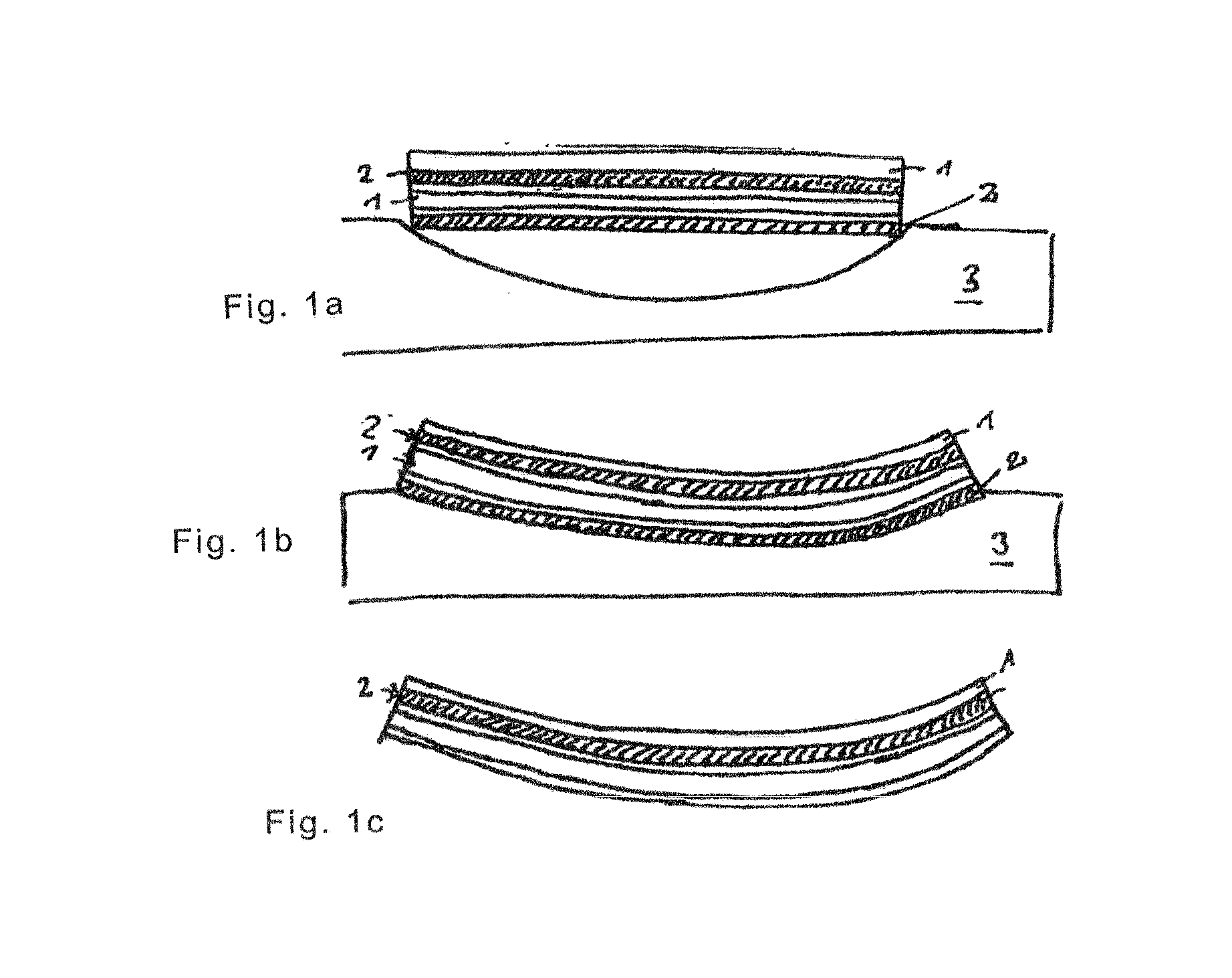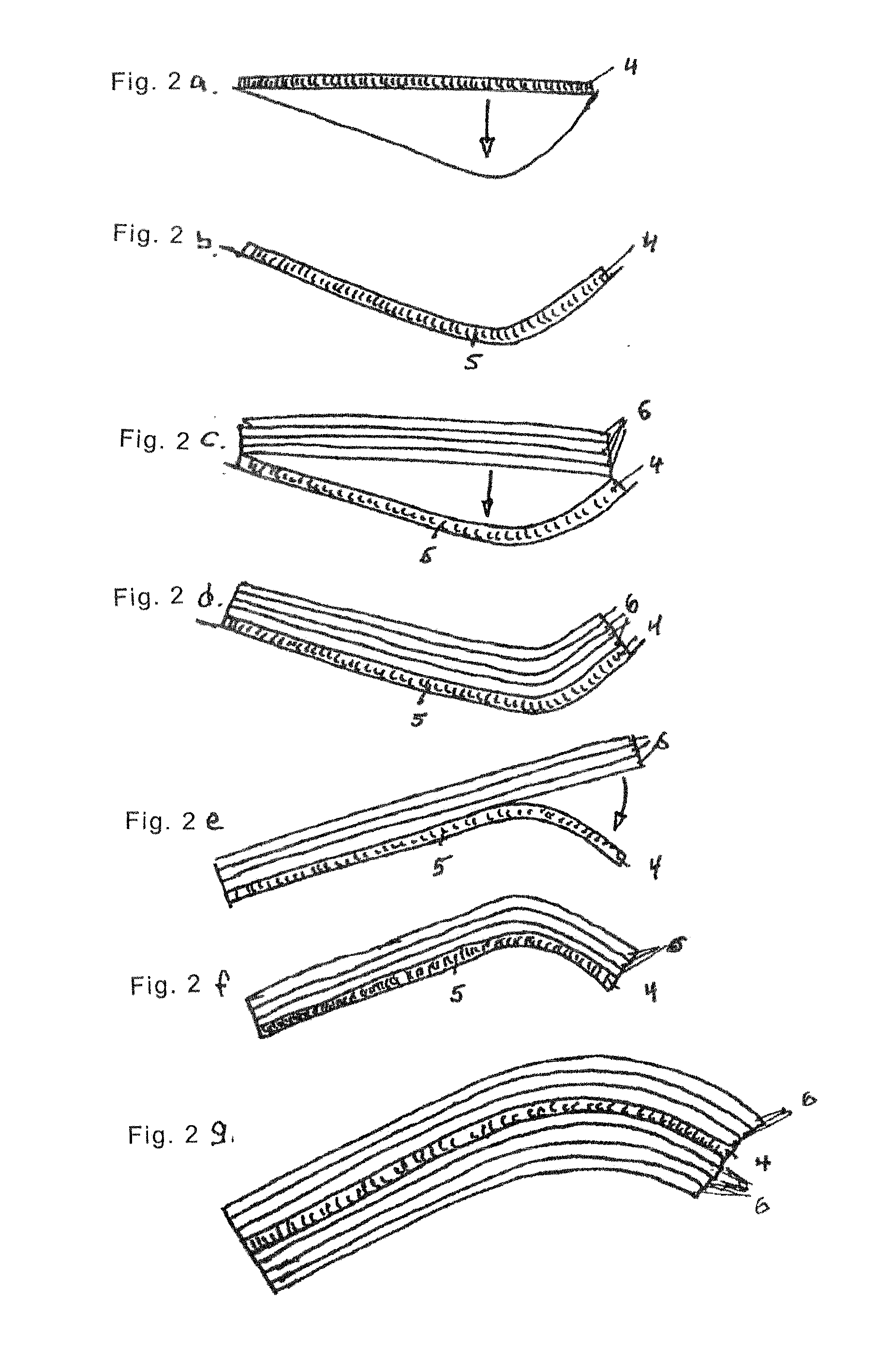Laminated, transparent set of panes, process for producing and bending same, and use thereof
a transparent, two-dimensional or three-dimensional bending technology, applied in glass tempering apparatuses, natural mineral layered products, manufacturing tools, etc., can solve the problems of large interior volume loss, lack of installation space, and general limited desire for the most effective possible bulletproofing, and achieve the effect of high viscosity, shortening the long bending time, and high viscosity
- Summary
- Abstract
- Description
- Claims
- Application Information
AI Technical Summary
Benefits of technology
Problems solved by technology
Method used
Image
Examples
Embodiment Construction
[0070]The process according to the invention will be explained in more detail with reference to the exemplary embodiments shown in FIG. 1 and FIG. 2.
[0071]FIGS. 1a to 1c illustrate successive bending steps of a process for making a laminated, transparent set of panes and transparent interleaved layers according to the invention. FIGS. 1a and 1b show the common bending of panes 1 of BOROFLOAT® 33 and panes 2 (shown hatched) of BOROFLOAT® 40 with a sacrificial plate 3 of BOROFLOAT® 40 at a temperature of 580° C. The bending radius is 2300 mm and the panes have a dimension of about 600 mm×600 mm. The respective temperatures at which BOROFLOAT® 33 and BOROFLOAT® 40 both have a viscosity of 1012 dPas are 595° C. and 625° C. At the selected temperature of 580° C., BOROFLOAT® 33 has a viscosity of about 1012.4 dPas and BOROFLOAT® 40 has a viscosity of about 1013.7 dPas. The bending duration is 12 h. The finished product of the bending is illustrated in FIG. 1C.
[0072]FIGS. 2a to 2g illustra...
PUM
| Property | Measurement | Unit |
|---|---|---|
| Temperature | aaaaa | aaaaa |
| Length | aaaaa | aaaaa |
| Length | aaaaa | aaaaa |
Abstract
Description
Claims
Application Information
 Login to View More
Login to View More - R&D Engineer
- R&D Manager
- IP Professional
- Industry Leading Data Capabilities
- Powerful AI technology
- Patent DNA Extraction
Browse by: Latest US Patents, China's latest patents, Technical Efficacy Thesaurus, Application Domain, Technology Topic, Popular Technical Reports.
© 2024 PatSnap. All rights reserved.Legal|Privacy policy|Modern Slavery Act Transparency Statement|Sitemap|About US| Contact US: help@patsnap.com










